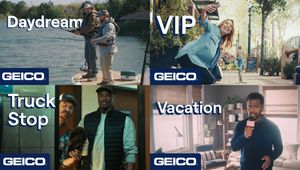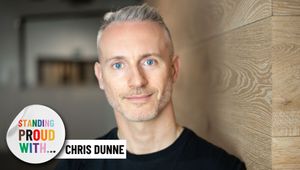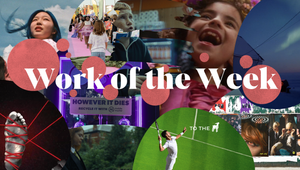
Adidas and Humanrace’s Rachel Muscat Argues Brand Collab Rewards Outweigh Risks

Rachel Muscat - the ex-Adidas exec who worked on the Yeezy collaboration and co-founder of Pharrell’s skincare line, Humanrace - is adamant that brand partnerships which break the rules and centre communities are worthwhile, even if they feel risky.
The Humanrace founder and CEO spent 10 years at at Adidas as global director, Yeezy product and GTM, during which Nike dominated the sneaker scene. She was presented with the challenge of ‘How do we make Adidas cool again?’
Working with Kayne West on the Yeezy collaboration required compromises from both parties. The iconic three stripes on the side of a pair of Adidas was swapped out for ‘Adidas boost technology’.
“There are no stripes on the product. You can imagine the kinds of conversations we had with our CMO and the CEO about that. We landed on a compromise. Kanye loved Boost, that for us at the time was the opportunity to kind of have Nike has with Air. The product was called Yeezy Boost 350,” she said, on a panel presented and moderated by EssenceMediacom’s chief of creative futures Chris Hitchcock.
For Adidas, it was all about bringing back the youth culture that the brand was associated with, according to Rachel.
“I think it's really interesting about what journey you are going to be going on with your partner to help you, but then also how you bring the customer and your community on that journey as well,” she explained.
Rachel noted other successful examples: Adidas and Pharrell Williams breathing new life into the Superstar sneakers; the creation of Humanrace; and a foodie festival in New York, ‘Family Style’, that puts the community front and centre. Each collaboration created and grew cultural relevance for the brands, and relied on community involvement to become a success.
“There is a really lovely synergy between these cultures. What was so important to focus on was the convergence of the communities and industries coming together,” Rachel said.
“It doesn't have to be just sneakers and fashion. It's really about what's happening in your community and your industry.”
Frunch Nazarri, managing partner at Archetype, said there is a current battle for attention facing brands of all sizes around the globe. He believes that collaborations that “surprise and delight” help a brand stand out from the rest.
“I was actually initially quite surprised that Penfold’s would exist in the collaboration space and have the appetite to do so,” added Luke Anton, global head of collaborations, content, and marketing at Penfolds. “But it was immediately identifiable that they understood the desire and need for consumers to grow with the brand.”
Penfolds and Japanese fashion designer, Nigo, collaborated to design new packaging for the brand, while keeping the legacy of Penfold’s alive and well. Luke detailed the challenges of working at an alcohol brand, including the extensive checks of what they are promoting and who they are collaborating with. Other challenges included the requirements from wine-makers when it came to labels. The labels couldn’t be messed with, but everything else was free space.
“I think that when you have that healthy relationship with your team, it creates flexibility. It allows you to play authentically. And authenticity is one of the game changing aspects that you need in collaboration,” he said.
There are, however, risks associated with a brand collaboration in terms of longevity. Rachel understands that there is a risk that the collaborator may change their alignment and no longer suit the brand, but that risk is outweighed by the reward.
“You know who you're walking in with, and that's really important. So what are the guardrails that you do to protect the team?” she said.
“You're working with humans. I do believe there's an understanding with that.”















